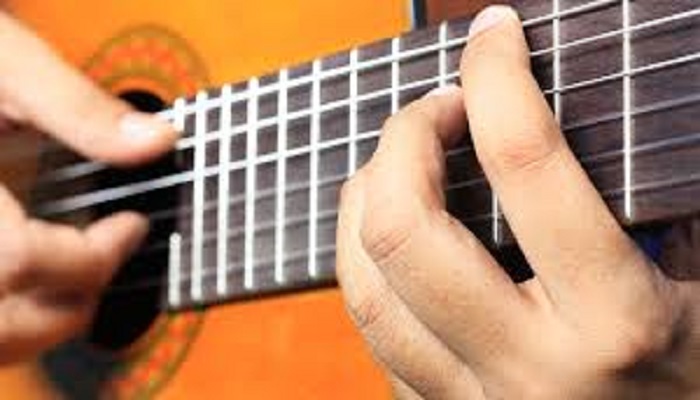Mastering classical guitar fingerstyle techniques involves developing a combination of technical skill, musicality, and precision. Here’s a comprehensive guide to help you master these essential techniques and elevate your classical guitar playing:
Understanding Basic Fingerstyle Concepts
- Finger Placement: The basic fingers used in classical guitar fingerstyle are:
- P (Pulgar): Thumb
- I (Índice): Index finger
- M (Medio): Middle finger
- A (Anular): Ring finger
- Hand Position: Maintain a relaxed hand position with your fingers slightly curved. Your thumb should generally be used to pluck the lower strings (E, A, D), while your index, middle, and ring fingers handle the higher strings (G, B, E).
Essential Techniques
Rest Stroke (Pulgar)
- Definition: A rest stroke involves striking a string with the thumb while allowing it to rest on the adjacent string.
- Execution: Position your thumb so it approaches the string at a slight angle. Strum the string with a firm, controlled motion, allowing the thumb to follow through and rest on the next string.
- Application: Commonly used in classical guitar to produce a strong, clear tone, especially in melodies and bass lines.
Free Stroke (Aire)
- Definition: A free stroke involves plucking a string with the finger without resting on the adjacent string.
- Execution: Use a relaxed and fluid motion with your index, middle, or ring finger. Let the finger move freely, allowing it to return to a natural position.
- Application: Ideal for playing arpeggios, scales, and passages where a more delicate touch is required.
Arpeggio
- Definition: An arpeggio is the playing of the notes of a chord individually rather than simultaneously.
- Execution: Practice arpeggios by using the thumb for the bass notes and the index, middle, and ring fingers for the higher notes. Ensure each note is clear and even.
- Application: Arpeggios are foundational in classical guitar music and are used in many pieces to create flowing, melodic lines.
Finger Independence
- Definition: Finger independence involves the ability to control each finger individually to perform complex patterns and techniques.
- Execution: Practice exercises that focus on each finger’s dexterity and strength. Use drills that alternate between different fingers and strings.
- Application: Essential for playing intricate passages, fingerstyle patterns, and achieving smooth transitions between notes.

Advanced Techniques
Fingerpicking Patterns
- Definition: Fingerpicking patterns are specific sequences of finger movements used to play chords or melodies.
- Execution: Develop and practice common fingerpicking patterns such as P-I-M-A (thumb-index-middle-ring) and variations thereof. Focus on evenness and rhythm.
- Application: Essential for classical guitar repertoire, where patterns are used to create texture and complexity.
Thumb Over (Tapping)
- Definition: Thumb over involves using the thumb to tap on the fretboard, usually to play bass notes or create rhythmic accents.
- Execution: Position the thumb to tap the string firmly and clearly, producing a distinct sound.
- Application: Adds rhythmic and dynamic elements to your playing, often used in modern classical guitar techniques.
Thumb Slap
- Definition: A thumb slap is a percussive technique where the thumb strikes the strings to produce a muted, rhythmic sound.
- Execution: Use the edge of the thumb to slap the strings sharply, creating a short, sharp sound.
- Application: Adds a rhythmic and percussive element to your playing, often used for stylistic effects.
Developing Musicality
- Expression: Beyond technique, focus on expressing the emotional content of the music. Use dynamics, phrasing, and articulation to bring out the character of the piece.
- Listening: Listen to recordings of accomplished classical guitarists to understand different interpretations and styles. Analyze their use of fingerstyle techniques and incorporate their insights into your own playing.
Practice Strategies
- Slow Practice: Begin by practicing techniques slowly and gradually increase speed as you gain proficiency. Ensure each note is clear and each movement is controlled.
- Use a Metronome: Practice with a metronome to develop a consistent sense of rhythm and timing. Start at a slow tempo and gradually increase as you become more comfortable.
- Isolate Sections: Break down complex pieces into smaller sections and practice each part separately. Focus on mastering individual segments before putting them together.
Building a Practice Routine
- Warm-up Exercises: Incorporate warm-up exercises to prepare your fingers and hands for more demanding practice sessions. This helps prevent injury and improves overall technique.
- Technical Drills: Include specific drills for fingerstyle techniques, such as scales, arpeggios, and patterns. Regular practice of these drills helps build strength and dexterity.
- Repertoire Practice: Spend time working on classical guitar pieces that incorporate various fingerstyle techniques. Apply the skills you’ve developed to real music and work on interpretation and performance.
Conclusion
Mastering classical guitar fingerstyle techniques requires dedication, patience, and consistent practice. By focusing on fundamental techniques, advanced skills, and musical expression, you can develop a high level of proficiency and artistry. Whether you’re playing simple exercises or complex classical compositions, these techniques will enhance your ability to express yourself through the beautiful and intricate world of classical guitar music.
